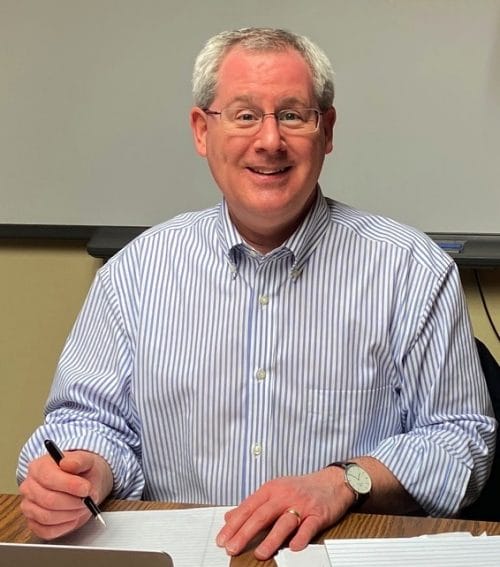How often do you think about the water you drink and use each day? We all take it for granted because we are accustomed to having it always available whenever we want it. Yet, when it is not present, we readily notice its absence. We cannot live without it.
Two experiences changed my perspective about water: my well water had high levels of arsenic and my well pump broke down. These events gave me a crash course on the daily use of water in my home. I also got my hands dirty helping to fix the well pump.
Water is clear (or at least it should be), so we do not readily see what is in it. Unless you take your water directly from a stream or river, we do not even see where water comes from, with it all being underground and in pipes. Individual wells or municipal systems deliver water to your or to everyone else in your town. Septic systems and sewer lines take the dirty water away. Because most of the water cycle occurs on or below the ground surface (rain is the part that happens from above), land use activities on or beneath the ground have a direct affect upon the amount and quality of your source water supply. Thus, planning and zoning commissions should be aware of and think about water not only as a natural resource, but also as an ever-required public need.
What affects the source water supply in one neighborhood can affect an entire community and then other towns near and distant. Water travels deep underground in aquifers and far downstream along rivers. In northeast Connecticut, there is a lot of water. We do not see all of it because the lakes and streams on the surface are just part of the overall picture. If you look at water resource maps, you will be surprised as to the breadth and depth of our region’s water supply. It is literally all around us. That is why land use activities can affect it and planning and zoning commissions think about it.
Fresh water is a finite natural resource. The more houses and businesses that are built in a town, and the more people that live and work in that town (population density), the more the water system is strained. Less water does not make us happy. It can negatively affect public health and safety. Local agriculture, commerce and industry, which we depend upon for our local food supplies and economies, feel the strain too.
Water’s ability to reach aquifers can become disturbed. The degrees and methods of land development can physically alter the water cycle. Readily identifiable examples include changing the landscape so water flows away from watershed areas; creating excessive impervious surfaces (paved streets and parking lots) that do not allow the ground to absorb rain; and increasing water run off that leads to soil erosion.
Water can easily and irreparably become contaminated. Changing the land surface too much can limit nature’s way of cleaning water and decrease the recharging of aquifers and reservoirs. Daily land use activities can cause pollution, some of it temporary and some of it permanent. It does not need to be large amounts of pollution at one time (such as an oil spill). Small amounts over time from our daily activities, multiplied by the number of people living and working in your town, add up to large amounts. Water is excellent at dissolving many substances and dispersing them over great distances. We are not alone in being affected by what disturbs our water supplies: animals, plants and trees likewise are affected.
Some of the things that your town’s planning and zoning commission thinks about regarding water include its availability, protection, quality, and renewability. Maps of your town can be created that show the co-location of water relative to your town’s geography; existing neighborhoods, buildings, streets, and farms; density of residential, business, agricultural, and recreational activities; and projected areas of growth, development, and different land use activities. If you piece together each town’s water resource maps, then you can see the bigger picture of where the water is located and where it is being used in northeast Connecticut. This allows for identification of where potential water shortfalls may occur, where water vulnerability areas may develop, and where special attention may need to be focused regarding future water uses.
Many communities across the country create water protection overlay zones. These zones are applied over specifically designated parts of a municipality. In addition to the basic land use zoning regulations governing different parts of a town, these overlay zones provide additional protections to the water supply. A common aspect of water protection zoning is a prohibition of certain types of land use activities, such as placing industrial/manufacturing buildings or landfills over or near important public water supplies and wetlands; over-developing residential neighborhoods or commercial centers; or increasing land use too much near existing activities (such as agriculture and homes). These may not be in the best long-term water resource interests of your community. If a town takes the time to do a water needs assessment, then it can determine why, where and how additional protections may be needed.
Even without specific protection overlay zones, your town can nevertheless apply practical, common sense planning and zoning techniques regarding water resources in coordination with public works and public health agencies. The benefits can be magnified through the concurrent use of community-wide efforts to promote best water management and conservation practices. Water may seem a simple subject, but it is a complex, challenging and potentially costly one.
So, the next time you water your lawn and garden, take a drink, wash your dishes and clothes, brush your teeth, flush the toilet, or use the shower, think a little bit about all that it takes (and the planning and zoning that goes into it) to get the water that you need every day to you and to your community.

